- remind me tomorrow
- remind me next week
- never remind me
The X Button
U of N
by Todd Ciolek,

I thought that Killer Instinct was gone for good. It wasn't the worst fighting game of the 1990s by any stretch, but so much of it is painfully dated. Its plastic rendered characters and persistently in-your-face vocabulary (“supreme victory!”) worked only in that time around 1995 when Nintendo was doing its best to be edgy and leap headlong into the world of 3-D computer graphics.

Yet Nintendo parted ways with Killer Instinct and other Rare properties a while back. Microsoft swept them up, and this week they renewed their trademark for Killer Instinct. This surely doesn't portend a big rollout for Killer Instinct 3. If anything comes of it, the most we'll see is a Live version of the original arcade game or its lacking sequel. And perhaps that's all Killer Instinct really deserves.
NEWS
SHIN MEGAMI TENSEI IV HAS TURN-BASED BATTLES, TEENAGERS
Last month's Shin Megami Tensei IV trailer was just long enough to raise all sorts of questions. Why's the game taking place in medieval castles and modern cities? What's the battle system like? Why does the main character look like Korra from the new Avatar series?

Well, the new Shin Megami Tensei IV trailer doesn't answer all of those questions. For example, it only gives a few hints about the game's curious juxtaposition of a fantasy realm and a present-day city. It begins with scenes of the game's four main characters standing atop castle walls and overlooking villages, while voiceovers mention a nation influencing the coming generation. Then it switches to shots of them gawking from the windows of what looks like Tokyo Tower.
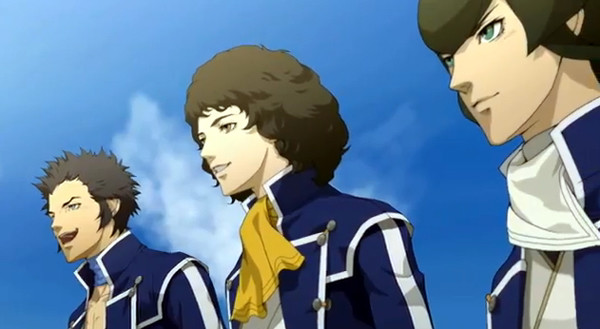
We have names to go with those faces, though the Korra-like lead is apparently called Flynn only as a placeholder. The large-coiffed fellow is Jonathan, the open-shirted guy is Walter, and the short-haired woman is Isabeau. One other detail is now apparent: these designs are the work of Trauma Center's Masayuki Doi, not longtime Shin Megami Tensei character artist Kazuma Kaneko.
The trailer reveals more concrete details about the battle system. Dungeons are 3-D affairs that the hero navigates with help from his wrist-mounted Comp. Enemies are visible ahead of encounters, and the battles include prior games' Turn Press option, which gives characters extra actions in battle. Curiously enough, the enemies are 2-D sprites during combat, which seems unbecoming of a 3DS game. Perhaps Atlus hopes to make up for it with the impressive 3-D environments and copious voice acting. More of Shin Megami Tensei IV may be revealed at the Tokyo Game Show this week.
EARTH DEFENSE FORCE 4 IS ONCE AGAIN A BUG HUNT, YES
Earth Defense Force's days as a rack-filler in D3's Simple Series are past. It's now a series of its own, with sequels and ports and a decent niche following. Earth Defense Force 4 (which is actually the sixth game in the line) is headed for the PlayStation 3 and Xbox 360 with several new additions to the alien insect horde that invades human civilization with every installment.

Unfolding eight years after Earth Defense Force 2017, the latest Earth Defense Force features the Retiarius, a new breed of spider that builds webs between buildings and snatches up unwary humans. It joins giant ants, arachnids, and robots in mounting a new attack on Earth's cities.
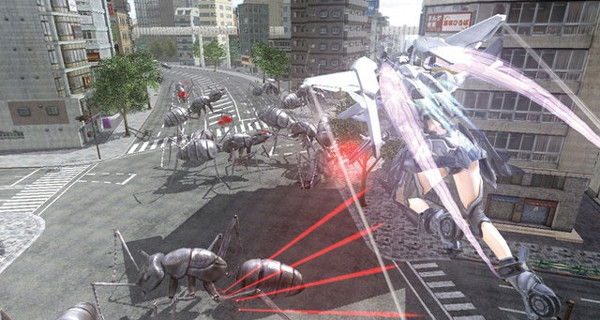
Among the beleaguered humans, the player can control either a heavily armed Ranger or a soaring Wing Diver, who spews lasers from above. D3 hasn't announced a North American release for the new Earth Defense Force, which arrives in Japan next year. The same goes for the PlayStation Vita version of Earth Defense Force 2017 (or Earth Defense Force 3) due in Japan later this month.
DEMONS' SCORE SNEAKS UP ON US
Where did INiS go after developing the spectacular rhythm games Osu! Tatakae! Ouendan and Elite Beat Agents? Well, they spent the last few years making Lips sing-along titles for the Xbox 360. Their latest creation is an iOS game called Demons' Score, and it arrives this week.
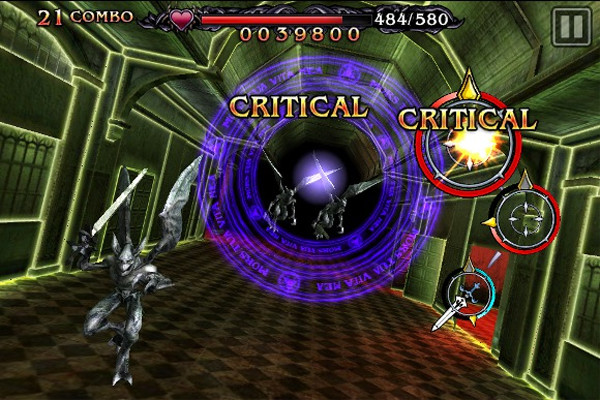
Demons' Score finds a college student named Serenity searching for her lost father in some hellish asylum, with only a talking teddy bear for an ally. Firearm in hand, she jets off down long hallways, and the player tracks her shots by tapping and flicking the screen in time with the game's music. The game's heavy-metal Silent Hill vibe and screamy soundtrack might be a bit much, but it's darned good to have INiS back.
SPOTLIGHT: THE WII U
The Wii U is an aggressive move for Nintendo. It's not just that it's a successor to the company's revolutionary Wii. It's also the first time in the past twenty years that Nintendo's kicked off a new generation of home consoles. The Wii arrived on the market after the Xbox 360, the GameCube was beaten by the PlayStation 2, and the Nintendo 64 was noticeably late to the PlayStation and Sega Saturn's little party. So Nintendo fired first this time and announced their Wii U launch plans last week.
The Wii U is set to arrive in North America on November 18, before either Europe or Japan's release dates (and conveniently on the eve of America's post-Thanksgiving consumerist bonanza). The regular 8GB version of the console runs $299.99 and comes in white, while the black 32GB model costs $349.99 and includes plastic stands as well as NintendoLand. The storage capacity of either model can be expanded through the system's memory-card slot and USB outlets, and the whole thing uses a sensor bar just as the Wii U did. It even looks a lot like the Wii.
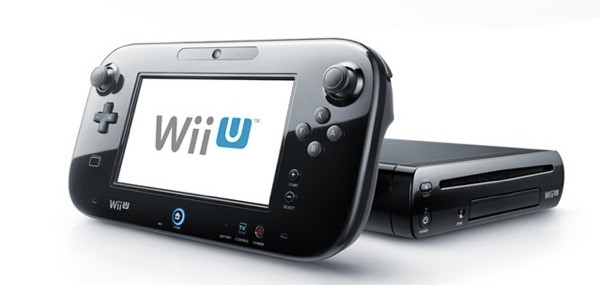
The real innovation, of course, lies in that Wii U controller. Fusing a conventional gamepad with a tablet, the Wii U's controller has a 6.2-inch touchscreen bordered by analog sticks, a d-pad, and four face buttons. It serves readily enough as a standard controller, with the smaller screen showing details about a game and accepting touch-based inputs. It also allows games to be played entirely on the controller, something that Nintendo hopes will come in handy when people fight over the TV. I've seen no statistics about the frequency and severity of such arguments, but Nintendo considers this feature rather important.
Nintendo has plans for the controller's screen beyond preventing horrible spats. The company's new Nintendo TVii program funnels all sorts of television and streaming services through the system, and it uses the controller's screen as both a remote and a viewing device. The Wii u can only support two touch-screen pads at a time, and there's reportedly a drop in frame rate when it does so. At least the original Wii remotes can run on the Wii U.
THE GAMES
Nintendo promises 22 games with its Wii U launch, but it's a lineup of ports and middling fare interspersed with a few standouts. Most of the highlights come from Nintendo itself. Yet the Wii U has something that both the Wii and GameCube lacked at launch: a traditional Mario game.

New Super Mario Bros. U is another promising attempt at evoking the spirit of classic Mario platformers alongside new concepts. The game sends Mario, Luigi, and two Toads through various side-scrolling levels, and their new power-ups include flying-squirrel suits and ballooning, bubble-spewing Yoshis. The game best shows off the Wii U in multiplayer mode, where the participant with the touch-screen controller creates blocks to help the others through a level...or to send them plummeting to their adorable doom.
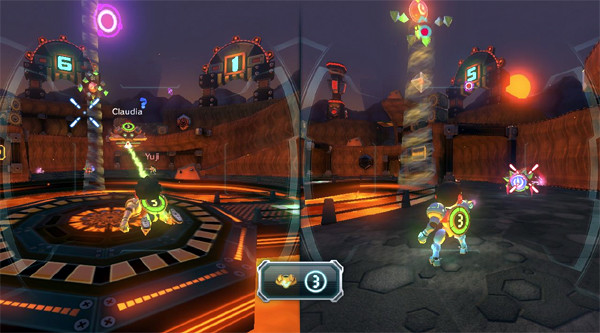
NintendoLand is the system's other big first-party showcase: a virtual amusement park where every ride's a mini-game based on some Nintendo title. Players' Mii avatars don appropriate costumes for the different attractions, which include shooting matches in Metroid Blast, the chases of Luigi's Ghost Mansion, and the candy-collecting of Animal Crossing: Sweet Day. Nintendo was fairly obscure in some of the inspirations, too. One ride's based on the old Famicom Disk game Nazo no Murasame Jo, and another calls back to an octopus-centric Game & Watch title.
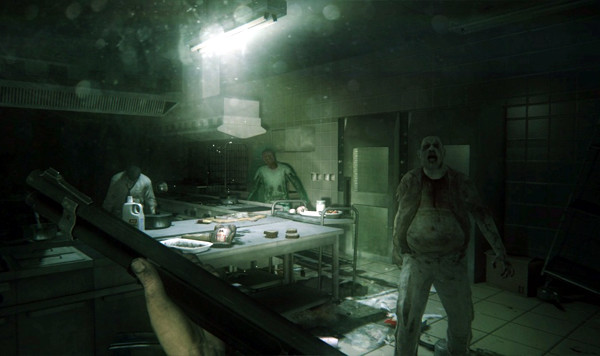
The third big name in the Wii U launch is Ubisoft's ZombiU, a first-person shooter that depict a London undead uprising. It makes novel use of the controller's touchscreen, which functions as a mapping device, a sniping scope, and a code-breaker for locked doors. ZombiU's multiplayer mode arranges itself like a horrific New Super Mario Bros. U: one player uses the touch-screen to command legions of zombies, while the other players try to fend them off. It seems ideal for the Resident Evil fan or the geek who can't stop complaining that Nintendo games are too "casual."
Among the rest of the launch offerings, there are a few half-intriguing ports. It'll be interesting to see how Mass Effect 3 and Tekken Tag Tournament 2 work the touchscreen into traditional RPG or fighting-game mechanics, and the same goes for Scribblenauts Unlimited. Also on the list are Assassin's Creed 3, Batman: Arkham City Armored Edition, Call of Duty: Black Ops 2, Darksiders 2, Epic Mickey 2, EPSN Sports Connection, Just Dance 4, Madden NFL 13, Marvel Avengers: Battle for Earth, NBA 2K13, Rabbids Land, Rayman Land, Sonic and All-Stars Racing Transformed, Transformers Prime, Your Shape: Fitness Evolved 2013, and the creatively titled Game Party Champions. Sorry, Game Party Champions. I know it's tough to stand out.
THE FUTURE
The most unexpected Wii U news last week involved a newly announced and newly snared exclusive: Bayonetta 2. Platinum Games is quite smart to furnish a sequel to their magnificently crass 2010 action title, but the original game was a PlayStation 3 and Xbox 360 effort published by Sega. The sequel's choice of console perturbed some fans to the point where several Platinum Games staffers issued statements. Company President and CEO Tatusya Minami remarked that “Bayonetta has fans the world over, and we would never dream of alienating them” while adding that their Nintendo partnership allows “even more gamers around the world to experience the action of our beloved witch.” Translation: cry all you want, Nintendo-loathing Bayonetta fans, but if it weren't for the Wii U, you probably wouldn't get any sequel at all.
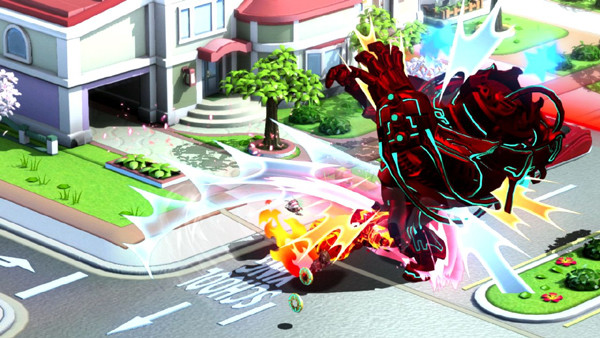
Platinum Games was cozy with the Wii U well before Bayonetta 2 appeared, of course. In fact, their upcoming The Wonderful 101 (previously Project P-100) is one of the system's most appealing original games. In the face of an alien invasion, superheroes lead groups of average citizens around a city. The assembled team forms all sorts of weapons and objects, all guided by the touchscreen. They turn into giant fists and guns to smash enemies, they form jets and hang gliders to soar through the air, and their forces swell with each victory. The game's wrapped in cheesy style that blends Viewtiful Joe with Pikmin, and it was easily the most striking game in Nintendo's Wii U gallery at this summer's Comic-Con. A shame it doesn't have a place in the launch lineup—or any firm release date, for that matter.
NEXT WEEK'S RELEASES
DEAD OR ALIVE 5  Developer: Team Ninja
Developer: Team NinjaPublisher: Tecmo KOEI Platform: PlayStation 3/Xbox 360 MSRP: $59.99/$79.99 (collector's edition) It's been six years since Dead or Alive 4, but Tecmo's big fighting series didn't slow down. It just took a vacation. In between actual fighting games, the series exploited its most profitable resource with Dead or Alive Xtreme 2 and Dead or Alive Paradise, hybrids of mini-game and dating-sim that show the women of Dead or Alive capering and lounging about in very little clothing. Dead or Alive 5, however, is neither unaccompanied lechery nor a 3DS revamp like Dead or Alive Dimensions. It's a return to the overblown action-movie brawling that's served the series well. The gameplay still relies on the paper-rock-scissors flow of the Triangle System, but Dead of Alive 5 makes much more of its scenery. Stages can change dramatically between rounds, characters are beset by everything from live wires to collapsing buildings, and there are many more opportunities to knock opponents into new territory. For the briefest time, it looked like Dead or Alive 5 might even tone down the pneumatic frames of its women, but then came more game footage and news of a special edition with “exclusive bunny/angel swimsuits.” Dead or Alive 5 takes care not to shake up the basic character roster, which still includes Ayane, Christie, Kokoro, La Mariposa, Helena, Hitomi, Leifang, Tina, and Kasumi. It also features the significantly less popular male characters Bayman, Eliot, Gen Fu, Hayate, Bass, Jann Lee, Brad Wong, and Ninja Gaiden's Ryu Hayabusa. The newcomers are an amnesiac oil worker named Rig (haw haw) and an enthusiastic mixed-martial specialist named Mila, while Virtua Figher's Pai, Akira, and Sarah also appear. Perhaps the rivalry between Dead or Alive and Tekken really is over.
|
MARVEL VS. CAPCOM ORIGINS 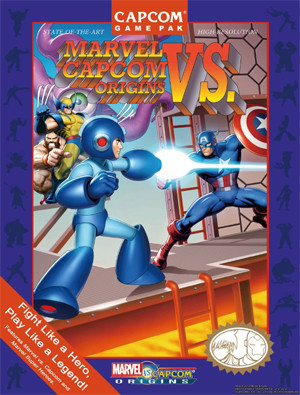 Developer: CAPCOM
Developer: CAPCOM Publisher: CAPCOM Platform: PlayStation Network/Xbox 360 MSRP: $14.99 /1200 Xbox Live Points Marvel vs. CAPCOM might seem redundant. It compiles arcade-perfect versions of Marvel Super Heroes and the original Marvel vs. CAPCOM, even though we already have Marvel vs. CAPCOM 2 and Marvel vs. CAPCOM 3 on the PlayStation 3 and Xbox 360. In fact, every main playable character from Origins also appears in Marvel vs. CAPCOM 2. But there's more going on here. In a unique turn, Marvel Super Heroes features the Infinity Gems in its comic-book battles, allowing players to use Time, Space, Power, Soul, Reality, and Mind gems for various power-ups during matches. Marvel vs. CAPCOM has its own strengths: it's limited to two-character teams instead of three, and it even has a few hidden faces (well, palette swapped faces) that aren't in subsequent games. And there's a lineup of sidekicks that delves deep into CAPCOM history. It's the only place you'll see Legendary Wings' Michelle Heart or Forgotten Worlds' Unknown Soldier in a fighting game. CAPCOM also added a number of new features to this package. Both games can be viewed with several filters and perspectives (including a tilted arcade-cabinet vantage), and their online play modes allow for the usual spectators and replay recordings. What's more, the two games represent less manic versions of the Marvel vs. CAPCOM aesthetic, and their smaller rosters bring a different balance. For those tired of Marvel vs. CAPCOM 2's tiers, its predecessor offers a game free of Cable and Sentinel.
|
ONE PIECE PIRATE WARRIORS  Developer: Tecmo KOEI/Omega Force
Developer: Tecmo KOEI/Omega Force Publisher: Namco Bandai Platform: PlayStation Network MSRP: TBA It made sense for Dynasty Warriors to tackle One Piece after adapting Gundam and Fist of the North Star. One Piece is still going strong in Japan, it turned 15 this year, and it's slowly recovering in North America after that unfortunate business with 4Kids. Of course, One Piece isn't popular enough to get a physical release here, so fans have to settle for a downloadable version on the PSN. And though you won't see Dynasty Warriors explicitly mentioned in the title, rest assured that this One Piece adaptation has the player pounding legions of foes, most of whom lack the gumption to do much beyond standing around. Yet the cartoonish look of Pirate Warriors breaks from the usual Dynasty outing, which never had a pirate captain belting opponents with his rubber limbs or bouncing back cannon shot with his inflated torso. Yes, Pirate Warriors is all about bringing a playable One Piece to the fans, and it covers plenty of territory. The storyline stretches from the East Blue Saga to the New World Saga, and the playable lineup features the above-mentioned rubbery Monkey D. Luffy, plus Usopp, Zoro, Nami, Sanji, Tony Tony Chopper, Franky, Nico Robin, Portgas D. Ace, Edward “Whitebeard” Newgate, Jinbe, Brook, and Boa Hancock. Most of them are as they appeared in the initial chunk of One Piece, but Luffy, Zoro, Sanji, and Tony are playable in the redesigned forms seen after the series skipped forward two years. There's also support from various other characters, including Galdino, Bentham, Crocodile, Buggy (who's among the bosses, too), and an assortment of pirate crews. Pirate Warriors also breaks free of the Dynasty Warriors formula at times; the boss fights cover plenty of ground, and there's a quick-time event or two amid the seemingly limitless brawling. There's no English-voice track, but these are the sacrifices one finds with download-only games. |
TOKYO JUNGLE The cover at left may seem spare, but it sums up Tokyo Jungle quite well. There's no action-packed shot of animals tearing each other apart; there's just one little Pomeranian in a city where humans have disappeared. Of course, that dog isn't alone in the actual game. With all of the people inexplicably gone, Tokyo is overrun by beasts: dogs, cats, birds, lions, elephants, deer, pandas, rabbits, chimpanzees, foxes, zebras, kangaroos, hippos, hyenas, bears, little baby chicks, and even a dinosaur or two. Players start off as a Pomeranian dog or a sika deer and proceed to do what animals do. The game requires the creatures to explore and stake out territory, keep themselves fed, and find nests for potential mates. Carnivores have to devour prey, herbivores have to avoid becoming prey, and both need to band together with others of their kind in order to survive. Throughout this journey, players gradually uncover the story behind the human race's disappearance, even if the animals don't care. So goes the game's story mode. Tokyo Jungle's Survival Mode offers a wider range of animals to control, and the results are more open. Whether guiding a large predator or a gaggle of yellow chicks, players have to last as long as possible in the urban wilds of Tokyo, and the game's leaderboards track how long and how well players were able to survive. There's also a lineup of downloadable beasts, including saber-toothed tigers, a caveman, and an average businessman. It remains to be seen how Tokyo Jungle handles all of the chaos, but this is one case where a game's idea truly sells it.
|
discuss this in the forum (24 posts) |
 Developer: Crispy's/PlayStation C.A.M.P.
Developer: Crispy's/PlayStation C.A.M.P.